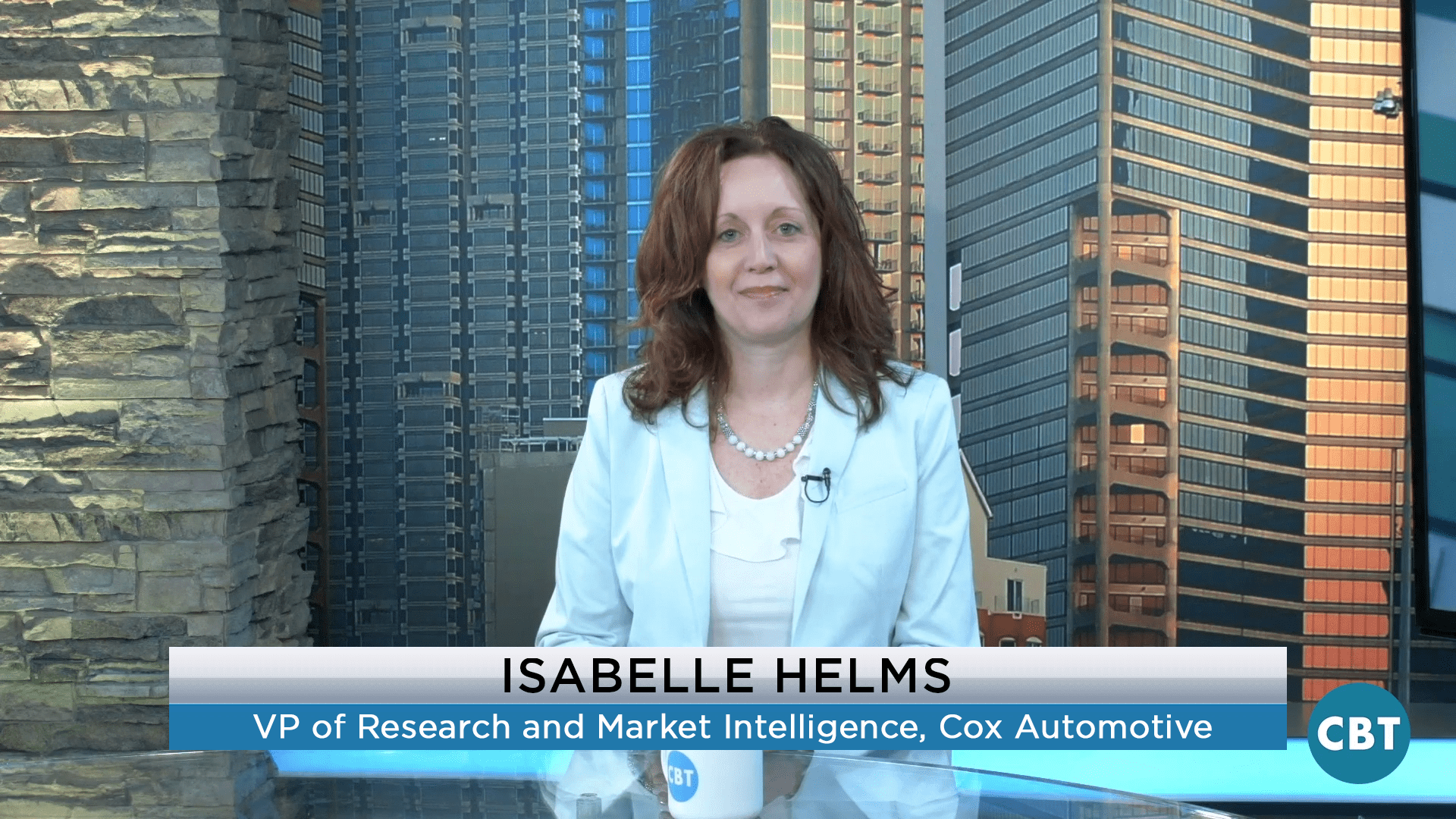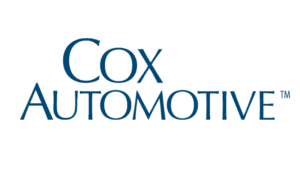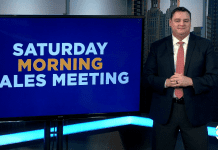On today’s show, we’re pleased to welcome back Isabelle Helms, vice president of research and market intelligence for Cox Automotive. Isabelle is here to discuss Cox’s recent 2019 Car Buyer Journey Study, and what its findings mean for your dealership.
Jim Fitzpatrick: Thanks so much for joining us again on CBT News.
Isabelle Helms: Yes, good to see you, thanks for having me.
Jim Fitzpatrick: Sure, so let’s dive right in. What does all this mean for dealers? Let’s talk about the survey.
Isabelle Helms: Several things. First is the interest in used cars has increase significantly over what we’ve seen in past years, we could talk about that for sure. Second, we have also ascertained through this research that third-party websites remain one of the primary destinations for car shoppers, where they discover new makes and models, and it’s also the place where they are most likely to make a determination about which car to buy.
Jim Fitzpatrick: Okay, I could see that, that makes sense, doesn’t it?
Isabelle Helms: Yeah, it does. And that hasn’t changed for many, many years, but it’s good for us to keep tabs on that. Because certainly there are lots of different ways you can learn about cars these days. There are two other things, one is the process for buying a car has gone down significantly, we could talk about why that’s happening.
Jim Fitzpatrick: The process from the dealer’s standpoint has gone down?
Isabelle Helms: From the consumer’s perspective.
Jim Fitzpatrick: Oh, okay, gotcha.
Isabelle Helms: So it’s shrinking in terms of duration of time.
Isabelle Helms: And then lastly, we believe, through the insights that came out of this survey, that digital retailing is really poised to change a process that consumers will tell you has not changed.
Jim Fitzpatrick: Right, right. I would have to agree with that statement as well. So talk to us about the used car side of it. You mentioned the used car vehicle consideration is increasing, what’s driving the change, do you think?
Isabelle Helms: One word is affordability.
Jim Fitzpatrick: Really? Okay.
Isabelle Helms: What we’re seeing this year is nearly two-thirds of car shoppers are considering buying a used car. And that’s five percentage points higher than what we saw in 2017, so pretty, pretty high.
Jim Fitzpatrick: Yeah, that’s a huge jump in just a year or two.
Isabelle Helms: It is a big, big jump. At the same time, when we talk to consumers in the marketplace, more and more of them, year after year, tell us that owning a car is becoming too expensive. And so … That shouldn’t come as a surprise to anyone when you take into account what’s happening to new car prices.
Just to share some numbers with you, that I’ve found really shocking when you step back and you think about it, in 2012, more than 50% of car buyers purchased cars that were $30,000 or less. Today, that number’s dropped to 36%. So above 50, 36.
Jim Fitzpatrick: Oh my gosh.
Isabelle Helms: And when you think about the flip side of things, cars that cost 50k or more, that has increased from 6% to 20+%, that’s nearly a 300% increase. So the used car market is hot, it’s great to be in used cars today. New car, a bit tougher. But we’re pretty bullish on the used car market, we think it’ll land at 39.4 million units in 2019.
Jim Fitzpatrick: You’ve been conducting a similar survey for several years. What’s the significant change that you’ve found over the last several years, anything that jumps out that surprised you?
Isabelle Helms: Yes, I think one of the things that surprised us this past year is the duration of the process. It shrunk. For the very, very first time, the number of days that consumers spend in market before they buy a car dropped below 100 days. It’s 96 days, which is 22 days lower than what we saw in 2017.
Jim Fitzpatrick: Oh, really?
Isabelle Helms: Yes. The amount of time they’re also spending shopping and researching has dropped to 14 hours. They shaved off an hour in just a two-year timeframe. So what are consumers doing? Well, they’re spending a lot more time online. So while the process is decreasing, the percentage of time they’re spending on time is actually increasing, 61% are now spending time online visiting 4.3 websites, lots of third-party sites, dealership websites as well. So big opportunity for dealers to expose consumers to their inventory, to their brands, while these consumers are shopping online.
Jim Fitzpatrick: Yeah, for sure.
Isabelle Helms: What I think it means also for dealerships is consumers are far more and better prepared when they visit stores. And speaking of dealerships, I remember a day when consumers would spend over … Would visit at least four dealers, four plus dealers during the shopping process. Today, it’s now down to 2.3, and 41% of the consumers we spoke to only visited one dealer.
Jim Fitzpatrick: Really?
Isabelle Helms: Yes. So again-
Jim Fitzpatrick: That’s a high number, 41%?
Isabelle Helms: Forty-one percent.
Jim Fitzpatrick: Just one dealer.
Isabelle Helms: Visited the dealership of purchase.
Jim Fitzpatrick: Wow, that’s incredible. So dealers … The customers that are coming in, four out of 10 are there to buy a car right now, right?
Isabelle Helms: That’s right.
Jim Fitzpatrick: The notion that they want to shop around and they’re going to hit dealerships, don’t listen to it, because the reality is they’re coming in to buy a car and to do business on that vehicle.
Isabelle Helms: They are ready-to-buy shoppers.
Jim Fitzpatrick: Yeah. Talk to us about the impact that leasing has had, or maybe some of these other subscription programs that are offered by manufacturers. Has that played a role in their-
Isabelle Helms: I think that leasing and subscription will play a larger role in the ownership … Really, I think what that has the potential to do is to really disrupt traditional ownership. Because of affordability. What other options are there besides owning a vehicle? I think that’s an area where both of those can have major play.
Jim Fitzpatrick: So talk to us about some of the things that are happening in Cox Automotive, you guys are always on the cutting edge of things that auto dealers are using, right?
Isabelle Helms: Yes, so one of the things that the study taught us this year is that, despite all of the advances that are taking place in dealerships today, 61% of consumers told us that the experience they had at the dealership was either the same or worse than the last time they purchased a car.
Jim Fitzpatrick: Ouch. That’s not good.
Isabelle Helms: That’s disappointing, that is disappointing. One of the things we know as well is the most frustrating part of the process at the dealership is doing the paperwork, and-
Jim Fitzpatrick: Why does it take so long?
Isabelle Helms: And the negotiation. Had you invited me five years ago, I would have told you those were the same two pain points. We’ve not really moved the needle in that respect. So we, at Cox Automotive, are really, really busy thinking of ways to help consumers solve those pain points, help dealers solve those pain points.
Jim Fitzpatrick: I was going to say, dealers too.
Isabelle Helms: For consumers. We know that consumers who complete these steps online, and I’m talking specifically about paperwork and negotiation, are significantly more satisfied with the dealership experience. Yet less than 10% are doing it today.
Jim Fitzpatrick: Yeah, so talk to us about that, because digital retailing is … It’s here, not every dealer is doing it, not every dealership is offering it, but consumers tell us in survey after survey that they want to do more of the process online, that they see the day that the car is delivered to their home after they’ve now signed everything online, and they feel comfortable doing business in their own home with a strong return policy in the event they made the wrong decision, right?
Isabelle Helms: Correct, correct. I would say digital retailing is still in its infancy, and some dealerships are skeptical about the process. Yet, when we speak with consumers who engage with digital retailing and complete these steps out of the comfort of their own home, they shave off an hour at the dealership, they come out a more satisfied consumer, and the dealership experiences and realizes efficiencies in the process. So I think that has the potential to be a really big win-win for both consumers and dealers.
Jim Fitzpatrick: Right, and I know Cox Automotive, for dealers that are out there wondering, “How do I navigate through this digital process and digital retailing?”, Cox is a pretty good vendor when it comes to that, right? Pretty good partner that says, “Hey, we can hold your hand through every single step of the process, from marketing the car through the first touch point online, and then all the way through delivery of the paperwork and such,” right?
Isabelle Helms: That’s right, from the front end, from the consumer side, all the way to the F&I office, and very few partners out there have the opportunity to do that for dealers. We’re very comfortable in where we stand today in the marketplace and continuing to work on those solutions.
Jim Fitzpatrick: Yeah, for sure. Isabelle Helms, Cox Automotive, thank you so much for joining us on CBT News, we appreciate it.
Isabelle Helms: Thanks so much for your time.
CBT Automotive Network, the number one most watched network in retail automotive. This has been a JBF Business Media production.









